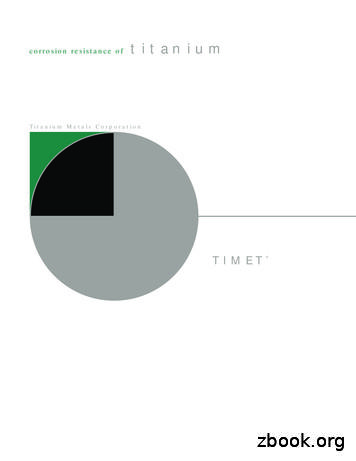Sound Waves Practice Problems PSI AP Physics 1 Name .
Sound Waves Practice ProblemsPSI AP Physics 1NameMultiple Choice1. dofwave2theresultis:(A) Twiceasgreat(B)One- hthegiveninformation.2. (A) Vair Vwater Vsteel(B) Vair Vwater Vsteel(C) Vair Vwater Vsteel(D) Vair Vwater VsteelUsethefollowingpictureforquestions3and4.3. relationshipbetweenthedistancesisSA AB BC frequency?(A) quency4. relationshipbetweenthedistancesisSA AB BC estintensity?(A) ensity5. gth(D)Speedofsound
6. length(D)Speedofsound7. 3,L/5(D)4L,4L/3,4L/58. ,850Hz(D)50Hz,100Hz,150Hz9. quency?(Vsound 340m/s)(A)85Hz(B)170Hz(C)340Hz(D)510Hz
12. 6.0m13. hatistheresonatingfrequency?(Vsound 340m/s)(A)85Hz(B)170Hz(C)340Hz(D)510Hz14. ,L/5(D)4L,4L/3,4L/515. z,750Hz(D)900Hz,1500Hz,2100Hz16. B)800Hz(C)1200Hz(D)2500Hz17. isthebeatfrequency?(A)5Hz(B)10Hz(C)15Hz(D)20Hz
18. (D)3.0m19. (D)6.0m20. Whatistheresonatingfrequency?(Vsound 340m/s)(A)85Hz(B)170Hz(C)340Hz(D)680Hz21. . (D)Decreasesandthenincreases
23. z(B)100Hz(C)180Hz(D)270Hz24. heobserver?(Vsound 340m/s)(A)1560Hz(B)780Hz(C)390Hz(D)195Hz25. ndatpointP?(A)0.75m(B)1.50m(C)1.75m(D)2.25m
26. cevelocity?DirectionMagnitude(A)TotherightVobj Vsound(B)TotherightVobj Vsound(C)TotherightVobj Vsound(D)TotheleftVobj Vsound27. ndinthatroom?(A) Theperiodofthetuningfork.(B) ) Thetemperatureintheroom.(D) loffluidinthebottledecreases?(A) Thespeedofthewave(B) Thewavelengthofthewave(C) Thefrequencyofthewave(D) Nothingremainsthesame.
Multi- mustselectbothanswers.29. defromthedisplay?Selecttwoanswers.(A) Thesoundwavesaretravelinginthesamedirection.(B) Thesoundwaveshavedifferentfrequencies.(C) Thesoundwaveshavethesameamplitude.(D) Thesoundwavesaretravelingatdifferentspeeds.30. cieswillresonateinbothtubes?(A) 340Hz(B) 680Hz(C) 1020Hz(D) 1360Hz
Free Response1) Twoloudspeakersseparatedbyadistanced 0.5mareplacedatadistanceL 2mfromy- quencyf microphonemovesinparalleltoy- mamplitude.(Vsound 340m/s)a. Determinethewavelengthofthesoundwaves.b. ximumandfirst- ‐ordermaximum.c. Determinethedistancefromtheorigintothefirst- ‐ordermaximum.d. erethemicrophonedetectsnosound.e. Iftheloudspeakersoscillateinanti- pattern?
2) nd 340m/s)a) Determinethewavelengthofthesoundwave.b) taysthesameasitwasdetermineinthefirsttrial.c) hentheaircolumnresonatesforthefirsttime.d) forthesecondtime?thirdtime?
3.Twoloudspeakersseparatedbyadistanced 0.75mareplacedatadistanceL 4mfromthey- quencyf icrophonemovesinparalleltothey- umamplitude.(Vsound 340m/s)a. Determinethewavelengthofthesoundwaves.b. ximumandfirst- ‐ordermaximum.c. Determinethedistancefromtheorigintothefirst- ‐ordermaximum.d. erethemicrophonedetectsnosound.e. Iftheloudspeakersoscillateinanti- pattern?
vsound ime?Thirdtime?
5. ethetubetofindthespeedofsoundintheroom.a. includewhatmeasurementsyouwouldmake.b. thespeedofsound.c. s1.5m0.005s1.7m0.007s2.5m
6. stanceLfromthey- amicrophonemovesinparalleltothey- umamplitude.a. ionxalongthex- ntheaxesbelow.b. functionofpositionalongthey- ‐axis.c. Assumethatd longthelineHH.
7. le.Use340m/sforthespeedofsound.a) Calculatethewavelengthofthesesoundwaves.b) tancethestudentcouldhavemovedtohearthismaximum.c) youranswer.
3.14.15.16.17.18.CDDCBB19.20.21.22.23.24.B25. BB26. CC27.BD28. AB29. B,CC30. 0.25m30 ceversa.2m170Hz0.5m1.5m,2.5m5.a) tleast3morepairsofdata.b) ��� !!!wheren 1.Thenuse𝑣 onesetofdata,theaveragecanbefound.c) Thespeedofsoundshouldbeapproximately340m/s.
5.a)b)c)113Hz6.a) 0.425mb) 2.4mc) 2.4montheoppositeoftheoriginoranymultipleof2.4md) tweenthespeakers.e) proportionaltofrequency.
PSI AP Physics 1 Name_ Multiple Choice 1. Two&sound&sources&S 1∧&S p;Hz&and250&Hz.&Whenwe& esult&is:& (A) great&&&&&(C)&The&same&&&&&
Handbook: Sound Waves Homework pg. 24 Simulation: Sound Waves 8 The Propagation of Sound Speed of sound Read: Speed of Sound, pg. 243 Problems: pg. 243 #1,3, pg. 246 #1,2,5 Handbook: Propagation of Sound Homework pg. 26 Video: Transverse and Longitudinal Waves 9 The Interference of Sound Interference of sound waves, beat
electromagnetic waves, like radio waves, microwaves, light, and x-rays are examples of transverse waves. Longitudinal waves travel through a medium in a direction parallel to the direction of travel of the wave. Mechanical waves such as sound waves, seismic waves created by earthquakes, and explosions are all examples of longitudinal waves.
Titanium alloys commonly used in industry Table 1 1 INTRODUCTION 35A 1 R50250 35,000 psi 25,000 psi C.P. Titanium* 50A 2 R50400 50,000 psi 40,000 psi C.P. Titanium* 65A 3 R50550 65,000 psi 55,000 psi C.P. Titanium* 75A 4 R50700 80,000 psi 70,000 psi C.P. Titanium* 6-4 5 R56400 130,000 psi 120,000 psi 6% AI, 4% V *Commercially Pure (Unalloyed .
Q: What are mechanical waves? A: Waves that require a medium in which to travel. A medium is the _ that waves travel through o Mediums can be solid, liquid, or gas Examples of mechanical waves include sound waves, seismic waves, ocean waves, etc Q: Describe two types of mechanical waves.
College physics Semester 2 Unit 2 What is a wave? How do they act? How are do waves differ? 1/29 Pre-test Waves on a String. Notes: Introduction to Waves . Lab: Waves on a String Activity (PhET) Do: read 12.3 p457 (1,3,5) 1/30 Clicker questions: Waves on a String. Lab: Fourier-Making Waves part 1 (PhET) 2/1 Lab: Fourier-Making Waves part 2 (PhET)
Chapter 16 Waves and Sound 179 Chapter 16 WAVES AND SOUND PREVIEW A wave is a disturbance which causes a transfer of energy.Mechanical waves need a medium in which to travel, but electromagnetic waves do not. Waves can be transverse or longitudinal, depending on the direction of the vibration of the wave.Sound is a longitudinal
3. WAVES CLA Epic Plugin User Guide CLA Epic User Guide Introduction Thank you for choosing Waves!. 4. WAVES JJP Drums Plugin User Guide WAVES JJP DRUMS User Guide Chapter 1 - Introduction Welcome. 5. WAVES CLA-3A Compressor Limiter Plugin User Manual CLA-3A Compressor Limiter Plugin WAVES CLA-3A User Manual TABLE OF. 6. WAVES CLA-2A .
A wave a moving disturbance. (Sound, water waves, etc. make some material substance move as they go by. Electromagnetic waves, such as light or radio waves, make electric and magnetic fields change strength.) Transverse waves: The medium is displaced perpendicular to the direction of propagation. Examples: light, string waves, water waves .























